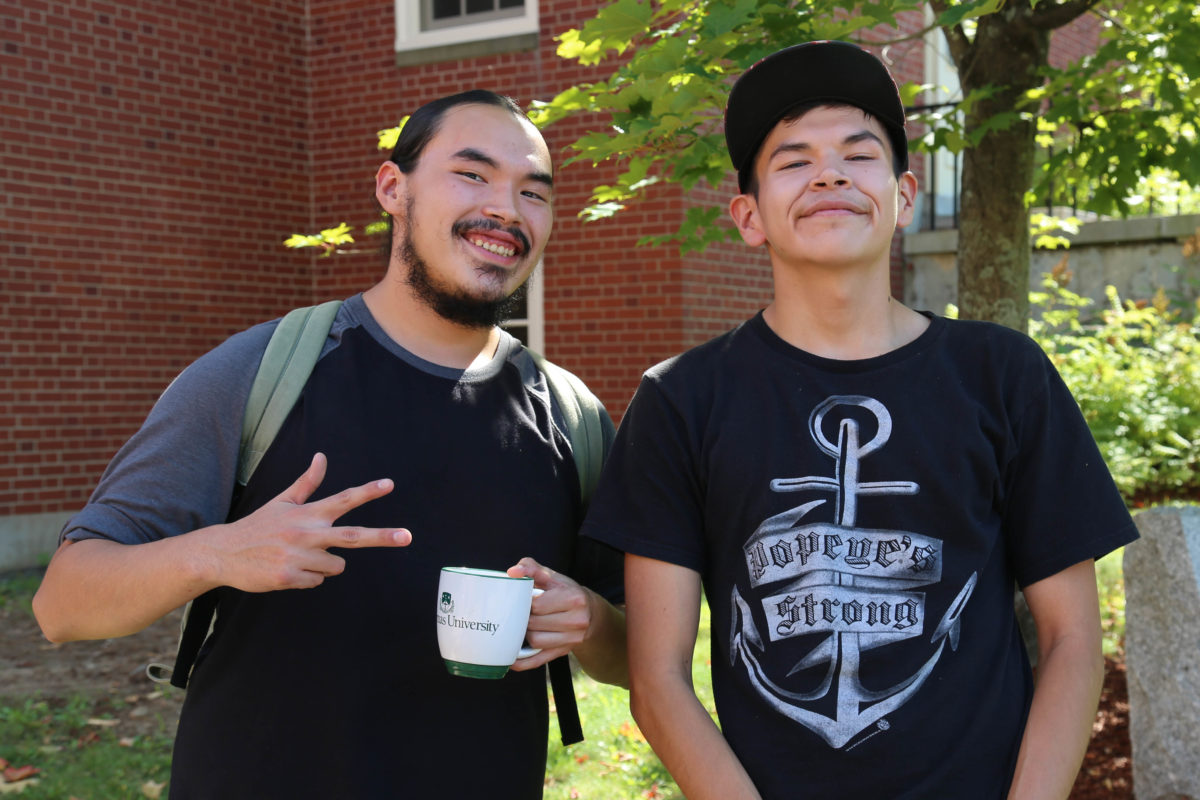
The first graduates of the Elmaatagemg program are now attending classes at St Thomas University.
The Elmaatagemg program offers Mi’kmaq students from Elsipogtog First Nation an opportunity to attend accredited STU classes on reserve.
“It helps ease aboriginal students into the university lifestyle, because one of the main reasons St. Thomas branched with Elsipogtog was the alarming rate of drop outs in aboriginal students,” said Suleon Augustine, an Elmaatagemg graduate. “This way it really helps and makes it easier.”
Suleon said the program offered him a chance to improve his essay writing and reading skills. He, along with four other graduates, received 12 credits with the completion of the Elmaatagemg program. The program started last October and offered courses in math and English. The program also offered workshops to learn time management, note taking and other essential university skills.
“It’s kind of different with the program. It was designed to (allow) you to get all of your work done and be closer to home, while helping you transition away from home,” said Nelson Augustine, Suleon’s younger brother. “Like everyone would say it’s lonely, but still good.”
The brothers said they’re happy to be taking courses here and are learning from each other. They’re also grateful for the Wabanaki Resource Centre.
“We offer support for students from A to Z, whatever it is they need whether that’s academic or non-academic, life skills stuff,” said Dan Robichaud, aboriginal student services officer.
Robichaud said the centre offers an elder in residence, Miigam’agan. She assists with some of the language and cultural aspects. Suleon said he appreciates the stories she can offer.
“I’m always inside the Wabanaki Centre. It feels at home. There’s Miigam’agan who’s always speaking in Mi’kmaq, half the time. [She always has] good stories to tell. It’s a really good transition,” said Suleon.
Robichaud said the success of the program is reliant on the people within the program. He would like to see programs like it in every community. He realizes this program was developed for Elsipogotog First Nation. He said every reservation is different. A program would have to be uniquely developed for each reservation taking into account their specific needs.
“Some communities are a year away from it and some are 10 years away,” said Robichaud. “Depending on what the community has developed and the people power they have. It’s really hard to parachute somebody into a community and say, ‘Hi I’m a teacher and I’m here to solve of your problems.’ It has to come from someone with in the community.”
Suleon agrees and hopes the program in Elsipogtog expands, but he realizes not everyone is up for the change. The program started with 15 and only five ended up at STU. Although some went off to other post-secondary instatutions, Suleon said not everyone is ready to transition.
He’s hopeful one day he can inspire other youths on his reservation.
“I like to prove a good example for the youth in our community, said Suleon. “I want to prove what we’re capable of.”
